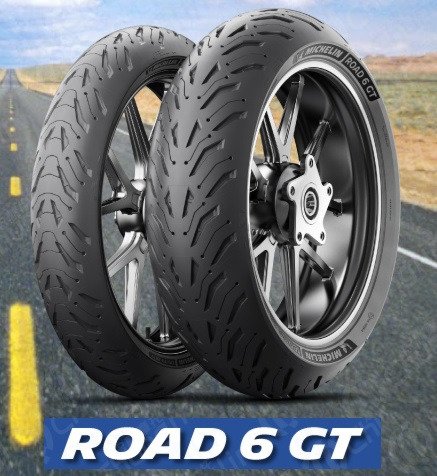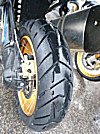Cookies and Privacy.
GT tyres, or not GT tyres... that is the question.

'GT' tyres are a more sturdy tyre with thicker sidewalls to give more predictable handing in large motorbikes. And this is where things get tricky.
Not all GT tyres are 'GT' tyres.
We're looking at you Pirelli! The Pirelli Angel GT is not a GT tyre, unless you choose the Angel GT 'A'' spec version.
The same is true with the Pirelli Angel GT2.
It's not as if Pirelli don't know what a 'GT' designation means, they made the Pirelli Night Dragon GT for heavier machines.
Not all non-GT tyres are non 'GT' tyres.
Metzeler like to buck the trend in more than one way!
The Metzeler Roadtec 01 has a 'GT' version, it's called the Heavy Weight Machine versions, look for the HWM suffix on the tyre size.
eg 180/55 ZR17 TL HWM
Before the Roadtec 01 there was the Metzeler Roadtec Z8 and that confuses things in 2 new and exciting ways>
1) There is no 'GT' front tyre, only rears.
2) The 'GT' rear tyre is designated as 'O' spec. so look out for the rear tyre such as
190/55 ZR17 TL O-Spec
And for pair combinations, take note that 'M'-spec means it's the normal standard tyre on the front.
120/70 ZR17 TL M-spec & 190/55 ZR17 TL O-spec
And Dunlop like to do things differently too....
The Dunlop Roadsmart 3 throws a proper curveball when it comes to 'GT' tyres.
They label many of the tyre sizes as being GT but these are not specifically for the large bikes we associate with GT tyres.
Their GT variants can be seen as the standard tyre, to suit most bikes, and there is an 'SP' version which you can think of as either 'SPort bike tyres' or 'Single Ply'.
This also applies to the newer Dunlop Roadsmart 4.
A shout out to the tyres who keep it simple.
Bridgestone and Michelin do keep 'GT' tyres straight forward, even if they're both guilty of confusing tyre name sequences.
Bridgestone got it right when they made the Bridgestone BT023GT and they still make them now and are amazing value for money.... and they're easy to identify as GT!
They then made the T30 GT which are no longer in production, but the Bridgestone T31 GT are still made and are the mid-price sports touring option from Bridgestone. The latest and greatest iteration is the Bridgestone T32 GT, the flagship Bridgestone sports touring radial tyre.
Michelin also keep things nice and easy with GT naming, but they also have tendencies to change tyre names as they go along.
The Michelin Pilot Road 4 GT are well known and respected, but the next version dropped the pilot and are simply the Road 5 GT and now the very popular Michelin Road 6 GT.
Last but not least, do have a look at the Continental Road Attack 4 GT which nicely replaced the Road Attack 3, and Road Attack 2 and of course, the Road Attack. Top marks for Continental for naming their sport touring radial tyres. HURRAH!
Does your bike need GT tyres?
Honestly, check your bike bike's manual!
If I use GT tyres will I get more mileage from them?
Nope!
If I'm doing a tour and I have luggage and a passenger do I need GT tyres?
Nope! Run your usual tyres, they were designed for your bike fully loaded.
Other reasons to avoid GT tyres if your bike doesnt need them...
You should always run the correct tyres for your bike. While your MOT tester wont fail you for having GT tyres they can cause other issues.
Poor handling, the tyres will be too stiff for your non-GT bike which could cause an accident in extreme circumstances.
- Insurance may not pay out if you have the wrong tyres on and those tyres were a factor in your crash / claim.
- Tyre warranty will be void if you have a tyre problem while running them on the wrong bike.
- Germany are very strict on running the correct tyres, a UK bobby may not even notice your GT tyres but a German Bundespolizei has more training, more access to information and more power to punish incorrect tyres.











